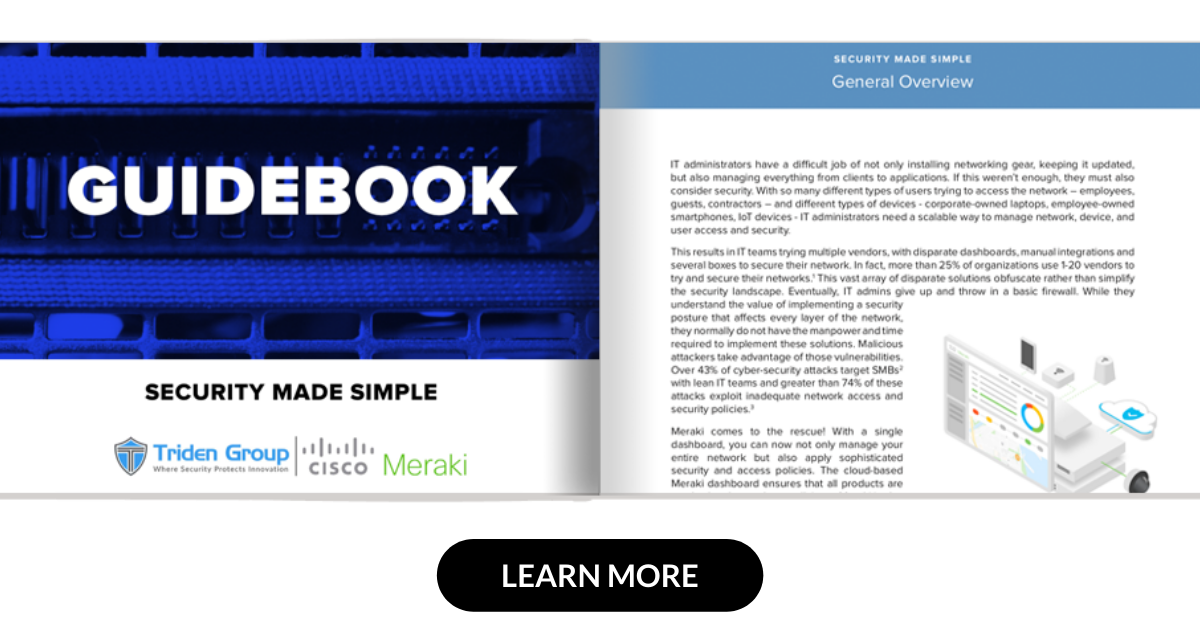As all aspects of healthcare become increasingly digital — from scheduling to prescription management to the use of IoT devices to track health data — healthcare organizations need to ensure that they also prioritize security.
Doing so can help comply with regulations the Health Insurance Portability and Accountability Act (HIPAA), while also reducing risks such as cyberattacks causing IT outages that get in the way of delivering care.
To reduce these risks, healthcare organizations can implement the following six best practices for IT infrastructure security:
1. Leverage IT Assets With Built-In Security:
In addition to looking for IT assets that meet performance needs, healthcare organizations should also evaluate network infrastructure. For example, switches and routers based on built-in security capabilities, like encryption. Moreover, digital platforms such as for data analysis should generally also include strong security capabilities.One such asset, Cisco Digital Network Architecture (DNA) suite for healthcare, includes a number of tools that help optimize digital networks. Cisco DNA’s enterprise network security capabilities include being able to identify network traffic in real-time and automate responses to cyberthreats.
2. Set User Access Policies:
Related to built-in security, best practices for IT infrastructure security for healthcare organizations should also include setting secure user-access policies. Doing so helps employees gain access to the systems and the data that they need to perform their jobs, yet it reduces the risk of employees accessing data that they shouldn’t legally or operationally be able to view.For example, Microsoft’s Azure Active Directory makes it easy to set sign-on and access controls across many applications. Some IT assets may also have built-in access controls.
3. Add Cybersecurity Software:
While built-in security capabilities and access controls can help reduce cybersecurity risk, many healthcare organizations benefit from the additional protection offered by dedicated cybersecurity platforms. These solutions can help block threats in areas like email and on mobile devices where you may not otherwise have the same network protections.Cybersecurity platform Cisco Umbrella combines different types of protection such as DNS-level security and cloud access security broker (CASB) capabilities so that you can reduce risks even when employees connect to your network remotely.
Another example of advanced cybersecurity protection, Seclytics, uses threat hunting capabilities to predict and prevent attacks before they even occur — so you don’t necessarily have to risk waiting to see whether your firewall can block them.
4. Update Systems and Devices:
Another best practice for IT infrastructure security is to keep systems and devices up-to-date. While it may seem straightforward, some healthcare organizations do not realize the risk of using older versions of software or certain devices that may not be able to handle new threats.When you see updates for operating software or systems like Microsoft Office, it’s generally important to make those updates right away, as they may contain security patches. Fortunately, updates can often be automated; Cisco Meraki users can set up automatic updates for their devices through the Meraki dashboard.
Healthcare organizations may also need to sometimes replace devices, such as computers or internet-connected healthcare equipment, that may not support newer versions of software that provide critical security updates.
5. Integrate Physical Security and Cybersecurity:
To protect patients and as a best practice for IT infrastructure security, healthcare organizations should also aim to integrate physical security and cybersecurity. Theft of computers, patient records or other sensitive materials can pose a significant risk to healthcare organizations. Thus, security guards, for example, should be aware of important IT assets that need protection.Security cameras, like those from Cisco Meraki, can also provide a deterrent. Cisco Meraki cameras can be easily managed through the Meraki dashboard, making it simple to securely manage and update these devices alongside other Meraki IT assets like switches and access points.
6. Improve Employee Awareness:
Healthcare organizations should aim to improve employee awareness of security threats and help them understand best practices for IT infrastructure security. For example, administrative staff should be trained for what to watch out for from cybercriminals who may send phishing emails to fraudulently obtain patient data or access networks.Doctors, nurses and other staff should also be aware of cybersecurity risks in areas such as wearable health devices, and they should be able to direct patients to resources on how they can protect the sensitive information these devices may collect.
Implementing these best practices for IT infrastructure security can help healthcare organizations undergo digital transformation while still being able to comply with regulations and maintain patient trust that their information remains safe.
Considering the number of security areas to cover, however, healthcare organizations may not have the resources to handle everything internally. That’s why working with a managed services provider can be so valuable, as we can simplify the assessment and implementation of best practices for IT infrastructure security specific to your organization.
Visit our IT Architecture Services page to learn more about how we help healthcare organizations design their IT infrastructure with security and performance in mind.
Triden Group can help you with your security. Download our “Security Made Simple” Guide.




Follow Us